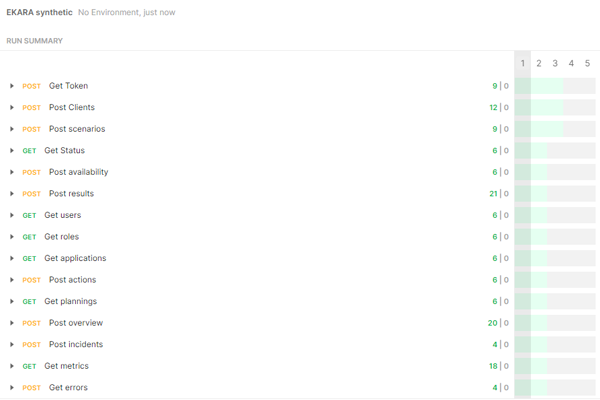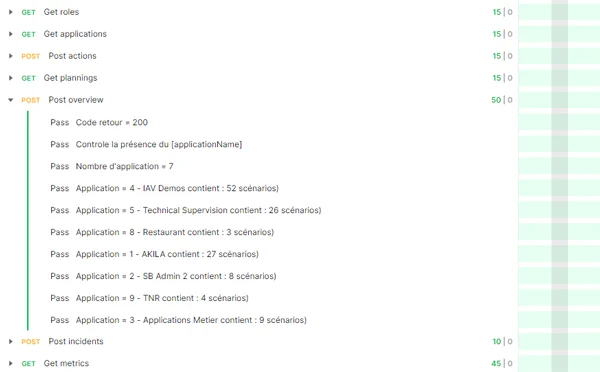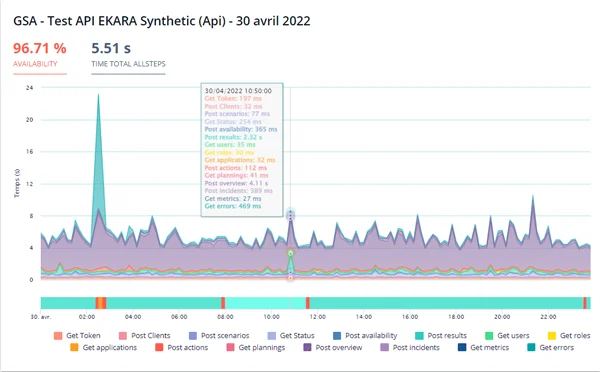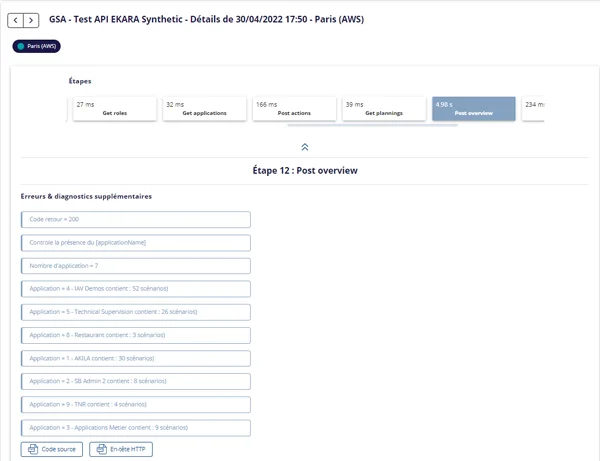Ekara API for rich metrics of API availability and performance
You may be wondering what Ekara API is all about and what it can do for you. What differentiates it from market-standard technical API testing solutions? How is it different from web monitoring, thick client monitoring, or mobile monitoring with Ekara?
APIs (Application Program Interfaces) and what they do
Let’s start by reviewing what an API is and what it does. An API is a set of rules or methods that enable different programs to communicate with each other.
Nearly everything that happens on the internet involves APIs. They operate in the background to perform tasks like validating addresses, processing credit cards, making reservations, or scheduling meetings and so on.
In terms of monitoring, API monitoring is more on the technical side. In fact, web and mobile applications use APIs without the user even knowing.
If there is a problem at API level, end users certainly see an error message from the application, but they do not necessarily know whether the API or some other element is the cause.
Here’s a diagram to illustrate how an API might be used:
- Without knowing it, by simply clicking you are most likely calling an API method, either to get information or to make something happen.
- The API receives your request and then performs the corresponding action.
- The API receives the result and then transmits it to you in a response which may be in one of several different formats.

How are APIs tested and monitored, in general?
A number of solutions are available on the market for testing APIs (SoapUI, Postman, JMeter, Assertible, and others).
POSTMAN is a reference in this field. Practically all of our Ekara customers know and use this product. Our customers’ developers create Postman collections, where they specify the method(s) that they want to test. In general, the results of these tests are simply ‘OK’ or ‘NOK’ – information at its most basic level.
For example, this is what 5 tests of 15 methods would look like:

How Ekara tests and monitors APIs
This is done simply by having Ekara play Postman collections. Customers send us their Postman collections, we create Ekara journeys to read those collections, and that’s it!
Now it’s time for some straight answers to some straight questions about:
- how Ekara builds on Postman collections to supply rich results
- what Ekara API brings to API monitoring, above and beyond Ekara Web or Ekara Mobile
Read on!
Ekara API enriches monitoring results with fine-grained metrics
First of all, if customers who want to test their APIs hand over their Postman collections to Ekara specialists to create Ekara journeys to read the collections, then “Why use Ekara, if the customer already knows how to do this with Postman?”.
The answer is that Ekara enriches API test results with analyses, providing depth and detail far beyond a simple OK or NOK. In other words, Ekara makes the customer’s collections smarter. For instance:
- Ekara can check the content of responses and validate them.
- It generates alerts where it determines that content is not coherent.
- If the customer’s API allows it, Ekara specialists can create a journey by stringing together calls to several methods (scroll down to the last part of this post to view the results).
What advantages does Ekara API offer over web or mobile monitoring?
Another thing people ask is “Couldn’t we just use Ekara Web or Ekara Mobile scenarios to test APIs?”. It’s a good question, since Ekara’s web and mobile solutions control applications via the interface, meaning that they necessarily interact with the API.
The answer is that Ekara allows high-frequency monitoring and fine-grain results for greater proactiveness. Here’s the difference:
- A web or mobile scenario validates an application’s availability and performance. It tests whether the web server is functioning, whether pages are coherent, and so forth, usually at a 15-minute frequency.
- Ekara API, on the other hand, targets solely the services that allow the application to function. Ekara API scenarios do not test web servers or the user interface. Because of this, API scenarios run faster, so the test frequency can be increased to 5-minute intervals, which means teams can be much more proactive. Furthermore, API scenarios are less sensitive to change.
Drill down to details in Ekara API charts
In this last part, we show you some of the benefits that Ekara API brings in terms of the detailed metrics it provides in various formats.
The example below performs an authentication. Information is passed from one method to the next to form a user journey:

Each method that is called is represented as a step by Ekara. The results of measurements of all the steps together are displayed in Ekara interactive performance charts like the one below.
The key below the chart shows the color-coding of each step. You can roll the mouse pointer over the chart to view the measures collected at any particular time.

A simple click on any part of the chart or its timeline drills down to detailed data about any step at that specific time:

These are only some of the metrics, traces, and information that Ekara API provides from its analysis of responses. To learn more about monitoring, API metrics, alerting capabilities, reporting features and more, the people at ip-label are happy to help.